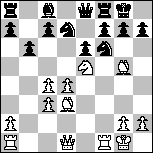
It is useful to compare these ideas with the BDG concepts by Tom Purser.
White plays e4 in order to sacrifice the pawn. After that, the aim is to exchange the f3-pawn to Black's e4-pawn. The c4- and d4-pawns do not move unless Black plays c5, whereupon White can play d5. If Black plays exd5, White plays cxd5.
If Black plays Bb4, it can be provoked sometimes with a3. If Black exchanges the bishop to the knight on c3, the b-pawn comes to c3. Alternatively, the bishop can be provoked with Qb3, after which the queen could go to c3, thus maintaining the solid pawn structure.
The g- and h-pawns just stand still; however, if White castles queenside, the h-pawn can be used in a brutal attack against Black's castled king. Sometimes gxf3 can be played after Black's exf3 to get the half-open g-file for the rook to attack.
The queen's bishop often goes to g5 to pin the knight at f6. Sometimes it is first played to e3 to defend the d4-pawn, especially if Black has played Nc6. If Black takes the wrong road by playing h6, White plays the queen to d2, and then sacrifices the bishop to the h6-pawn with a marvellous mating attack. As there is a pawn on c4, the king's bishop has no other place than d3. Finally it should go to c2, leaving d3 to the queen. Another way to put pressure on h7 is to play the queen to h4 via e1.
The knight on c3 mainly waits to be exchanged for Black's bishop; or if White's bishop is on g5, pinning Black's knight of f6, White's knight has a deadly place on e4. The knight on f3, on the other hand, is one of the main attackers either via e5 or g5.
Most often White castles kingside: the rook on f1 is attacking f6 directly. It can also go via f3 to g3 or h3, leaving f1 to the other rook, but usually the rook on a1 is quite useless. The king should be happy enough on g1.
The thematic route for the d-pawn is d5-e4-f3. The pawn at e6 hardly ever do anything unless White plays d5. The c-pawn can carefully go to c6, or boldly to c5. In fact, the c5-move is usually very strong, and may be the most challenging move for the whole theory of the DDG. The b6-move allows queen's fianchetto; however, the g6-move for a delayed king's fianchetto is very rare. The h6-move just weakens the castled king; on the other hand, the unmoved h7-pawn taken by White's queen is the most common mating move. The a-pawn is completely useless in most games.
The king's bishop goes too often to b4, just to be exchanged for the knight; better places are e7 or d6. The queen's bishop has not much hope: the e6-pawn blocks the way to the kingside, and the fianchetto seems to be almost the only, even though a pretty slow way to develop it. The queen has no absolutely best place. It can be pinned on d8, so it is customary to play it to c7. In any case, co-operation with bishops do not work.
The knight on f6 is the target of most combinations. For example, White's f-rook sacrificed to the knight on f6 is one the most common last moves before Black resigns. The other knight does not do much on c6, and is only passive on d7.
Black typically castles kingside. The rook on f8 is just blocking the king, who will be mated on g8 or h8. The a-rook can go to d8 or e8, but it seldom arrives in time.
This constructed game is very typical DDG.
1.e4 e6 2.d4 d5 3.c4 dxe4 4.Nc3 Nf6 5.f3 exf3 6.Nxf3 Bb4 7.Bd3 Bxc3+ 8.bxc3 O-O 9.O-O Nbd7 10.Bg5 b6 11.Ne5 Qe8
W

12.Bxf6 Nxf6 13.Rxf6 gxf6 14.Qg4+ Kh8 15.Qe4 f5 16.Qxa8 +-.